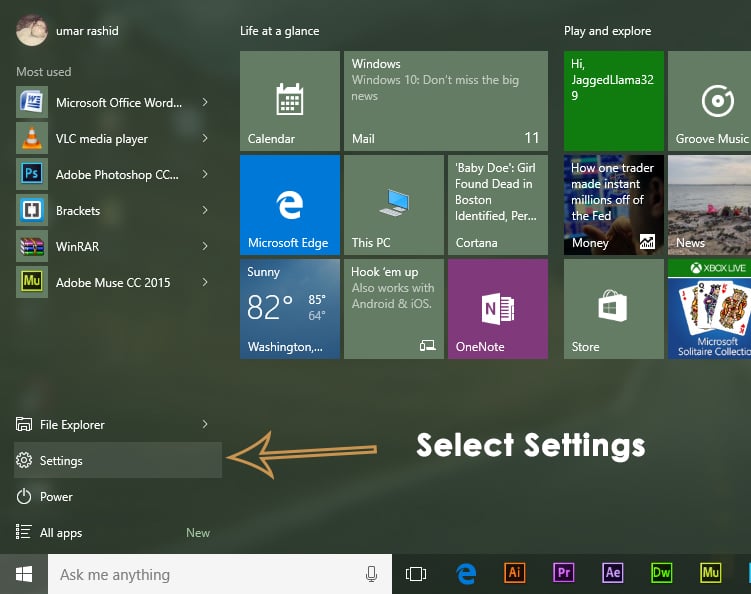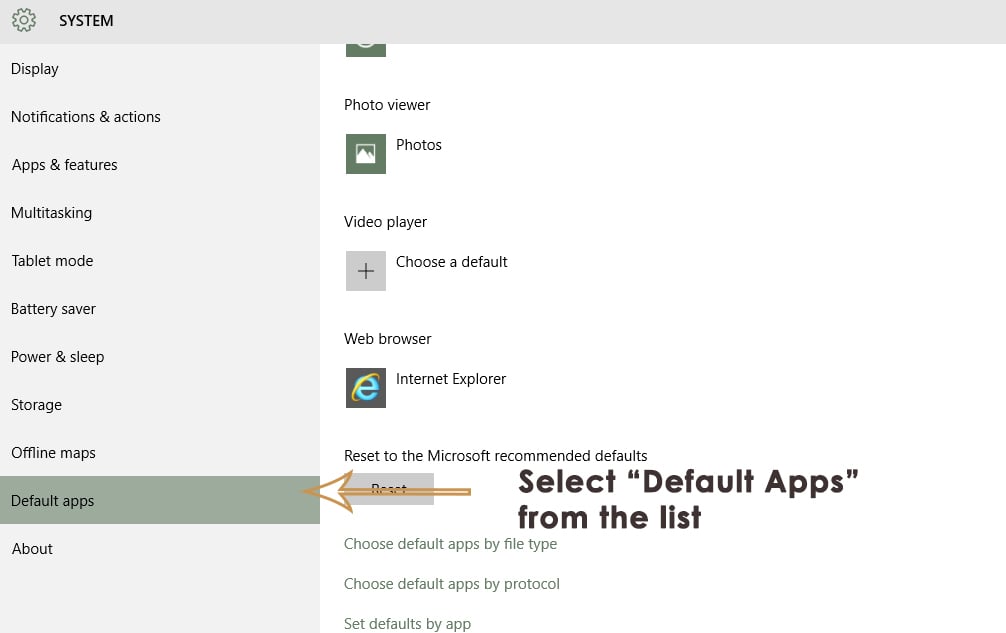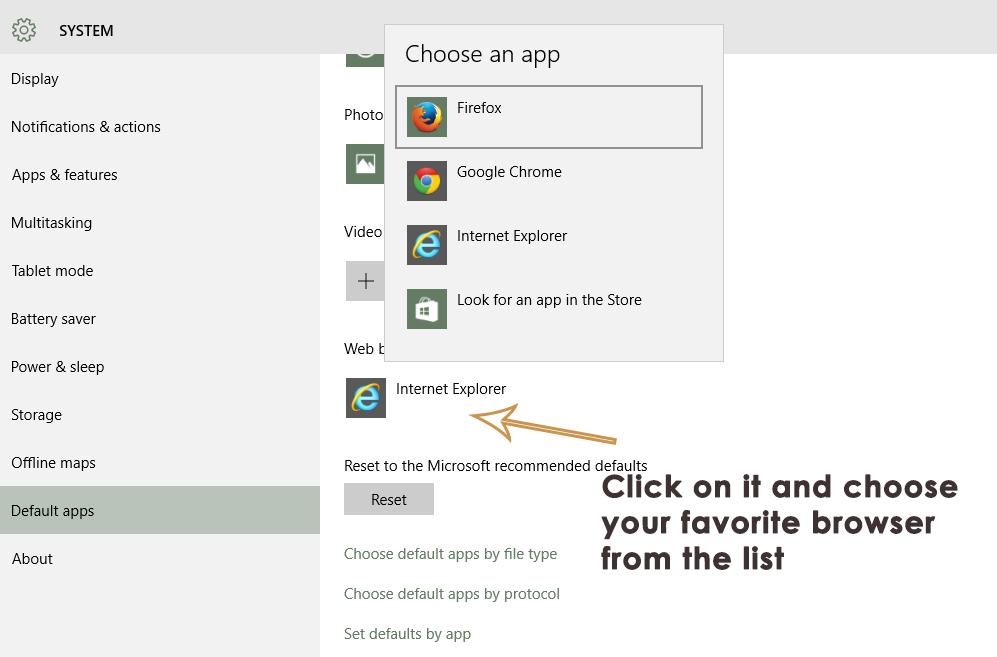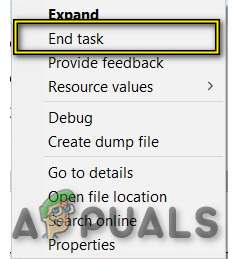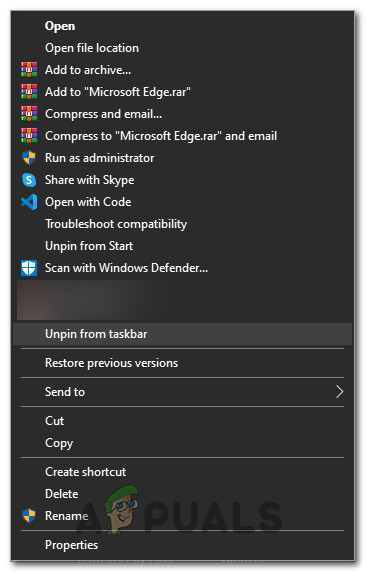So, people are asking, how to disable or delete Microsoft Edge inside their Windows 10. Truly speaking, there is no conventional way of deleting Microsoft Edge but you can disable it from opening the web pages automatically. Microsoft Edge is an integral part of Windows 10 and it cannot be deleted like IE which also cannot be removed conventionally. Before we proceed with disabling Edge, we should make a clear differentiation by what we mean by setting another browser as default. Microsoft Edge is an integral part of the operating system and although there are workarounds available, it is not guaranteed that they work as Microsoft aims to fix these loopholes in each update. Making another browser as your default doesn’t necessarily mean that Microsoft Edge will be uninstalled completely. It just means that your web pages will be opened in another web browser instead of Edge. So, here is the guide to disable Microsoft Edge and restrict it from opening websites automatically.
Solution 1: How to Disable Edge Using File Rename
A solution that worked for many users was renaming the core file of Microsoft Edge. Whenever Edge needs to run, it needs to access its installation files to launch instructions to launch accordingly. Once they are fetched, it starts. Since we have difficulty deleting the entire folder as Microsoft Edge is an important part of the OS, we can try renaming the directory. Do note that you need an administrator account to perform this operation.
Solution 2: Changing Default Browser
The only convenient and recommended way of disabling Microsoft Edge is to change the default browser inside Settings. As I mentioned before, there is no straightforward way of deleting or disabling the Edge permanently. So, you can follow these steps in order to restrict your Edge browser from opening the web content.
Go to Settings by clicking on the Start menu icon and selecting the Settings from the list.
Inside the settings, Click on System and select the Default apps option from the left pane located at the second last position in the list.
On the right pane, select Internet Explorer (set as default browser) and click on it. If you would have any other browser installed on your PC, then it would show up that one in the list. All you need to do is to select and different default browser in the list. As in my case, I have selected Firefox as my default browser. Also, it would be better if you unpin Edge browser from your taskbar as well as from start menu.
Solution 3: Removing Microsoft Edge using Registry
This method above technically changes the default browsers to avoid edge interference. However; if you would like to completely delete Edge; (which we wouldn’t recommend) reason being Edge is a trust User-Interface app and a core part of Windows 10. Therefore; it cannot be removed by the traditional methods. And since you’ve changed your default browsers; it wouldn’t interfere anyway; but if you would still like to continue then process with the steps below. Open command prompt as administrator, and type powershell followed by enter to switch cmd into PS. Once done; type This should list down all the installed apps and core features of Windows 10. Scroll down and look for the one with Microsoft.MicrosoftEdge, copy it (you can use your mouse to highlight the full name and then press Ctrl + C to copy it) or write down the PackageFullName, which will change depending on the build of Windows 10 you are using. For the RTM version released in July, that is: OR This should remove the app. Alternatively, you can navigate to the Windows Apps install location: And right-click the Microsoft Edge folder, Microsoft.MicrosoftEdge_8wekyb3d8bbwe, and select Properties, where you can set the folder and all its contents to Read-Only (make sure the checkbox shows a checkmark, not a square). This will prevent Windows from making changes to the folder. Then, you can open the folder and rename the Microsoft Edge executables (MicrosoftEdge.exe and MicrosoftEdgeCP.exe) and/or delete them.
Solution 4: Disabling Edge from Launching upon Restart
We will make use of the Registry Editor to stop Edge from launching upon the start of your computer. Do note that the registry editor is a powerful tool and changing keys which you have no knowledge about can bring discrepancies in your operating system.
Solution 5: Unpinning from Taskbar
Some users were able to get rid of the browser by simply unpinning it from their taskbar but it first needs to be stopped from the task manager as well in order to unpin it. In order to do this:
Changing Cortana’s Default Browser
Windows 10 is packed with a virtual assistant named Cortana. It is very helpful and helps you organize and accomplish your daily routine tasks effectively. However, like all other Microsoft Products, Cortana also used Microsoft Edge as the default browser for carrying out its tasks but you can make it use Chrome instead of Microsoft Edge.
How to Disable ‘End Process’ in the Browser Task Manager on Microsoft Edge?Microsoft Updates Chromium-Based Edge Browser With Several New FeaturesMicrosoft Edge Canary Update Now Allows You To Delete Unwanted Autofill Entries…Microsoft New Chromium-Based Edge Browser Multi-Process Architecture Helps…


